
Shadow of the Beast is a platform game developed by Reflections and published by Psygnosis in 1989. The original version was released for the Amiga, and was later ported to many other systems. The game was known for its graphics, with many colours on screen and up to twelve levels of parallax scrolling backdrops, and for its atmospheric score composed by David Whittaker that used high-quality instrument samples.

Barbarian: The Ultimate Warrior is a 1987 video game developed and published by Palace Software for the Amstrad CPC, Commodore 64, and ZX Spectrum. The game was ported to many other systems and was licensed to Epyx who published it as Death Sword in the United States.
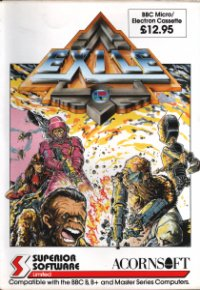
Exile is a single-player action-adventure video game originally published for the BBC Micro and Acorn Electron in 1988 by Superior Software and later ported to the Commodore 64, Amiga, CD32 and Atari ST, all published by Audiogenic. The game was designed and programmed by Peter Irvin and Jeremy Smith. It is often cited as one of the earliest examples of a Metroidvania game and featured "realistic gravity, inertia and object mass years before players understood the concept of a physics engine... an astounding level of AI, stealth-based gameplay, a logical ecosystem governing the world's creatures and a teleportation mechanic that feels startlingly like a predecessor to Portal".

Xenon 2: Megablast is a 1989 shoot 'em up video game developed by The Bitmap Brothers and published by Image Works for the Amiga and Atari ST. It was later converted to the Master System, PC-98, X68000, Mega Drive, Commodore CDTV, Game Boy, Acorn Archimedes and Atari Jaguar platforms. The game is a sequel to Xenon and takes place a millennium after the previous title. The goal of the game is to destroy a series of bombs planted throughout history by the Xenites, the vengeful antagonists of the first game.
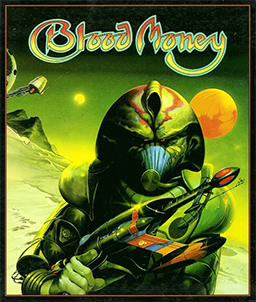
Blood Money is a side-scrolling shooter video game developed by DMA Design and published by Psygnosis in 1989 for the Amiga, Atari ST, and MS-DOS. A Commodore 64 version followed in 1990. The game is set in four different locations on a planet, where the player must fight off enemies and bosses.
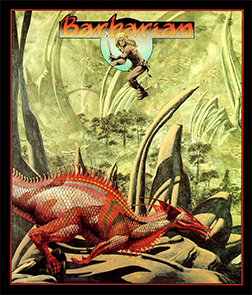
Barbarian is a 1987 platform game by Psygnosis. It was first developed for the Atari ST, and was ported to the Amiga, Commodore 64, MS-DOS, MSX, Amstrad CPC, and ZX Spectrum. The Amiga port was released in 1987; the others were released in 1988. The cover artwork is by fantasy artist Roger Dean.
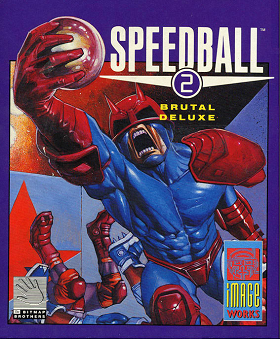
Speedball 2: Brutal Deluxe is a 1990 video game based on a violent futuristic sport that draws on elements of handball and ice hockey, and rewards violent play as well as goals. The concept of the game is very reminiscent of the 1975 film Rollerball. The original game was developed by Bitmap Brothers, with various remakes for many platforms since being published. It is a sequel to the 1988 game Speedball.

Beach Volley is a beach volleyball video game developed by Ocean France for the Amiga, Atari ST, Amstrad CPC, Commodore 64, and ZX Spectrum, released by Ocean Software in 1989. A stranger interrupts a beach volleyball game and offering the player to join the "Ocean Beach Volley" worldwide tournament, to play against the best from eight other countries. The winner of this competition will receive $250,000 dollars.

Fun School is a series of educational packages developed and published in the United Kingdom by Europress Software, initially as Database Educational Software. The original Fun School titles were sold mostly by mail order via off-the-page adverts in the magazines owned by Database Publications. A decision was made to create a new set of programs, call the range Fun School 2, and package them more professionally so they could be sold in computer stores around the UK. Every game comes as a set of three versions, each version set to cater for a specific age range.
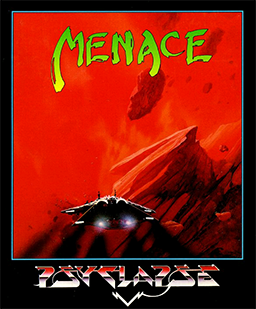
Menace is a horizontally scrolling shooter developed by DMA Design and published by Psygnosis. It was originally released for the Amiga in 1988, and was ported for the Atari ST, Commodore 64, and MS-DOS in 1989. The game is set on the planet of Draconia, where players are tasked with destroying the planet's defence mechanisms in order to kill the harmful creatures.

Superman: The Man of Steel is a 1989 video game featuring the DC Comics character Superman. It was developed and published by UK software company Tynesoft under license from First Star Software.

By Fair Means or Foul is a boxing video game first published for a range of 8-bit home computers in 1988 by Superior Software. It was later reissued with the new title by Codemasters who also published conversions for 16-bit computers. The game offers a variety of boxing moves including fouls. The game received mixed reviews.

Jack Nicklaus' Greatest 18 Holes of Major Championship Golf is a golf-simulation video game developed by Sculptured Software, and published by Accolade beginning in 1988. It was released for the Amiga, Amstrad CPC, Apple IIGS, Atari ST, Commodore 64 (C64), MS-DOS, Macintosh, MSX, Nintendo Entertainment System (NES), PC-88, Sharp X68000, and Game Boy.

The Real Ghostbusters is a 1987 shoot 'em up arcade game developed and published by Data East. It is loosely based on Ghostbusters. In Japan, Data East released it as a non-Ghostbusters arcade game under the title Meikyuu Hunter G. In 1989, Activision published The Real Ghostbusters for Amiga, Amstrad CPC, Atari ST, Commodore 64, and ZX Spectrum.
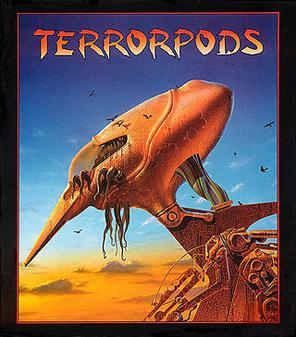
Terrorpods is a 1987 shooting game with simple business simulation by Psygnosis. Originally developed for the Amiga and Atari ST, it was later ported to the Commodore 64, ZX Spectrum, Amstrad CPC and MSX.
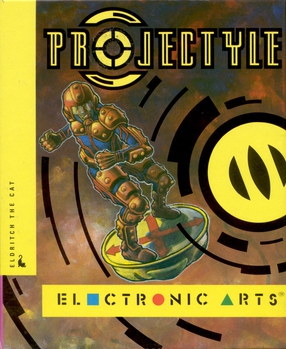
Projectyle is a sports video game originally released in 1990 for the Amiga and Atari ST.

P-47: The Phantom Fighter is a 1988 horizontally scrolling shooter arcade video game originally developed by NMK and published by Jaleco. Set during World War II, players control a Republic P-47 Thunderbolt fighter aircraft to face against the Nazis, who are occupying multiple countries around the world. Its gameplay involves destroying waves of enemies, picking up power-ups and new weapons, and destroying bosses. It ran on the Mega System 1 hardware.

TV Sports: Football is a 1988 video game by Cinemaware for Amiga, Atari ST, Commodore 64, DOS, and TurboGrafx-16.

Judge Dredd is a 1991 platform shoot 'em up video game based on the character of the same name. It was developed by Random Access and published by Virgin Mastertronic. It was released in Europe in 1991, for the Amiga, Atari ST, Commodore 64, and ZX Spectrum. Critics found the gameplay repetitive.
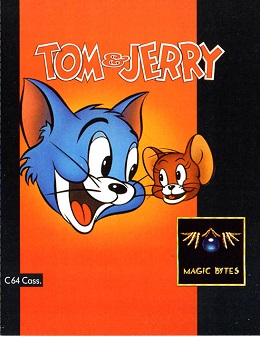
Tom & Jerry is a 1989 platform game developed and published by German company Magic Bytes. It is the first video game based on the cartoon of the same name, and was released in the United States and Europe, for Amiga, Atari ST, and Commodore 64 computers.





















